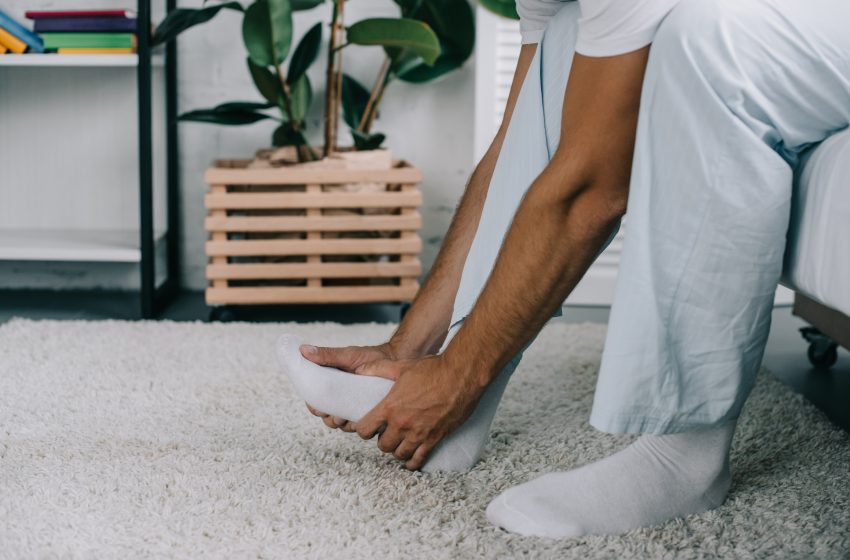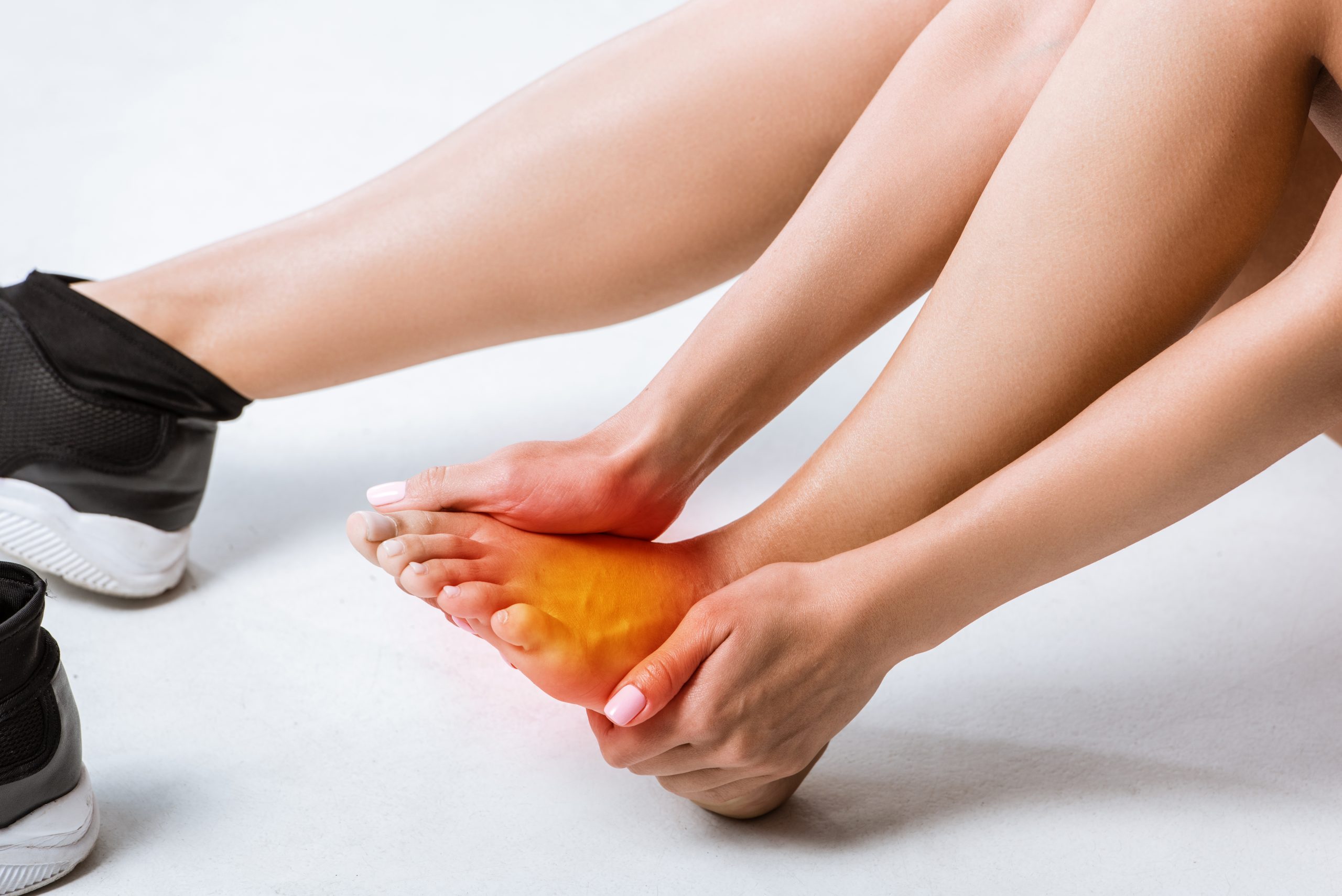
Pain At Ball Of Foot
Dealing with pain at ball of foot can be very severe. Foot pain can cause a significant lifestyle change. The inability to traverse as you did before can be challenging.
Finding the cause of this medical issue will be essential. We will share some of the common reasons and conditions related to this problem.
Several diseases can cause this issue, so it is necessary to have checks done so you can figure out the reason.
Visiting your doctor or hospital should be the first option as these places will have the tools to make diagnoses.
If you want to do self-checks, you should take some vital steps and understand you put yourself at risk by refusing to seek professional help.
If you still desire to learn more about what can cause pain at the ball of the foot, here are some conditions you should consider.

Contents
Pain At Ball Of Foot – Likely Causes
Morton’s Neuroma
Morton’s neuroma is one of many conditions that affect the ball of the feet. This disease occurs when irritation or compression causes the tissue around the nerves to swell.
One of the leading causes of this condition is wearing tight shoes. This practice compresses the feet, leading to irritation and inflamed tissue.
Symptoms of Morton’s neuroma are numbness and tingling in the toes. You may experience the feeling as though a small object is in your shoe.
Other signs are a burning sensation in the ball of the feet that extends to the toes.
Treatment for this condition is neurectomy which removes part of the affected nerve.
Other remedies include wearing special shoe inserts to give added comfort to the foot.
Freiberg’s Disease
Freiberg’s disease can cause pain in the ball of the feet. This condition occurs when the metatarsal bone becomes abnormal.
The cause of this disease is due to the blood supply not reaching the toe bone.
Symptoms of Freiberg’s disease are stiffness in the foot and pain primarily in the toes.
You may notice swelling and pain so severe that it becomes difficult to put weight on your foot.
Treatment for this condition is orthotics to help improve comfort and corticosteroid injections for the pain.
Other remedies are rest, as movement will cause more harm than good. Some cases may require surgery to remove the lesion.
Sesamoiditis
Sesamoiditis occurs when the sesamoid bones are inflamed. Overuse of the ball of the feet is a common cause.
Athletes and dancers suffer from this condition pretty often due to their lifestyles.
Symptoms of sesamoiditis are pain and stiffness at the bottom of the big toe.
Other signs are bruising, redness, and swelling in the area affected. Walking is an issue due to the pain, worsening the problem.
Treatment for this condition is medication to fight inflammation that causes the pain.
Other remedies are crutches to keep the weight from the feet and a cast to keep the foot secure.
Arthritis
Arthritis is another condition that affects the joints and balls of the feet.
A common cause of arthritis is an autoimmune disorder or wearing away of cartilage in the feet.
Symptoms of arthritis are a pain in the ball of the foot and stiffness that leads to immobility. Other signs are swelling, warmth in the toes, and tenderness to the touch.
You can treat this condition by using anti-inflammatory, pain relievers, and steroid injections. Other remedies are special shoes and inserts, along with crutches and physical therapy.
Arthritis is a disease that begins with lifestyle habits, as are many of the others on this list.
A change in lifestyle by changing your diet and engaging in more physical activity can help.
Pain At Ball Of Foot – More Causes
It amazes how many diseases can cause you pain in the ball of the feet. This reality makes it difficult to pinpoint what is giving you the pain.
Some cases require multiple tests to figure out which disease may be responsible. This challenge could prove how vital it is to visit the doctor.
You can find more causes of this symptom below, so keep reading to help achieve a proper diagnosis.
Here are a few other medical conditions that could cause the ball of your feet to hurt.
Stress Fractures
Stress fractures can hurt and bring significant discomfort to you. These fractures are tiny hairline cracks in the bones of the feet.
Some causes of this condition are overuse of the feet. Constant jumping and running can cause these fractures over time.
Osteoporosis can cause bones to weaken and make it easier for stress fractures to form.
Symptoms of stress fractures are a constant pain in the feet that worsen with or during activity. In some cases, it may stop after the workout has ended.
Other signs are swelling, stiffness, and tenderness in the bone. The inability to hop or walk on the foot is another way to know.
Treatment for this condition is adequate rest and icing the affected area for ten to fifteen minutes.
It would help if you iced the foot several times a day to help with swelling and pain.
You can use certain medications to help with the inflammation that causes pain. Avoid standing on the foot.
Hammer Toe
The Hammer toe can cause severe pain due to the abnormality of the toe. This condition occurs when persons wear tight shoes, making the toe bend downward.
Symptoms of a hammer toe are visible signs of an abnormality of the toe and swelling.
You may experience pain in the foot’s ball, stiffness, and redness. Other signs are corns and calluses on the toes by the joints.
Treatment for this condition is to wear shoes with more room, including more toe space. Other remedies are the icing of the area to reduce swelling and stop wearing heels.
You can also help by using a hammer toe pad to help with comfort. Getting rest from shoes can help.
Don’t allow the pain at ball of foot to stop you from enjoying life. Take care of your feet which equal freedom.
No one wants to feel incapable of going and coming as they desire; foot problems can cause you much distress.
